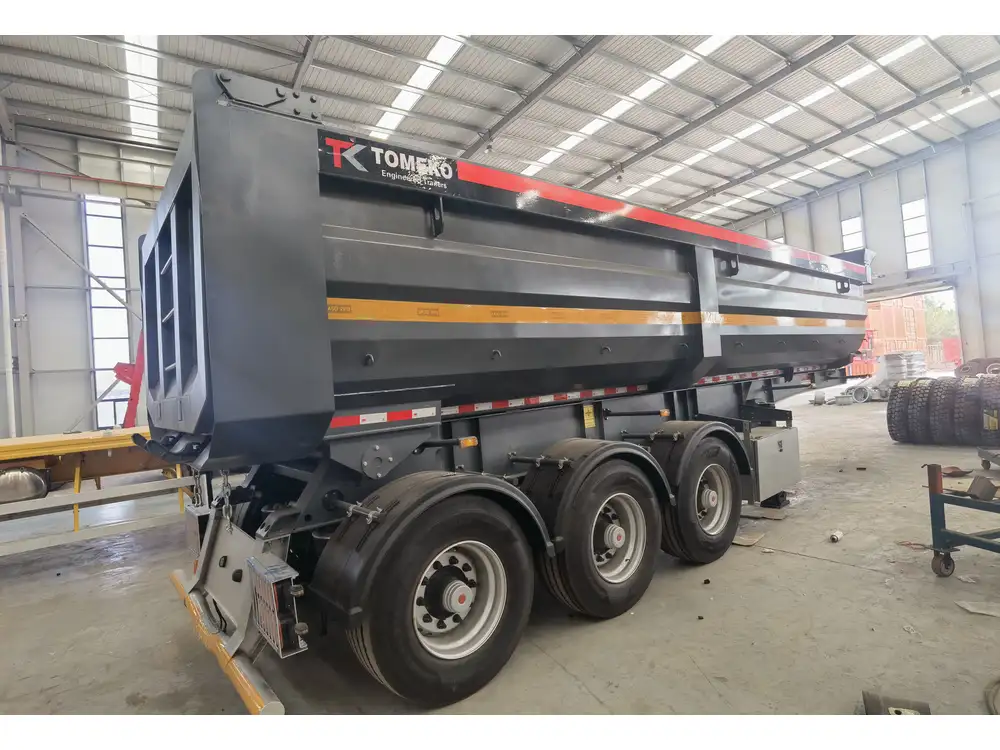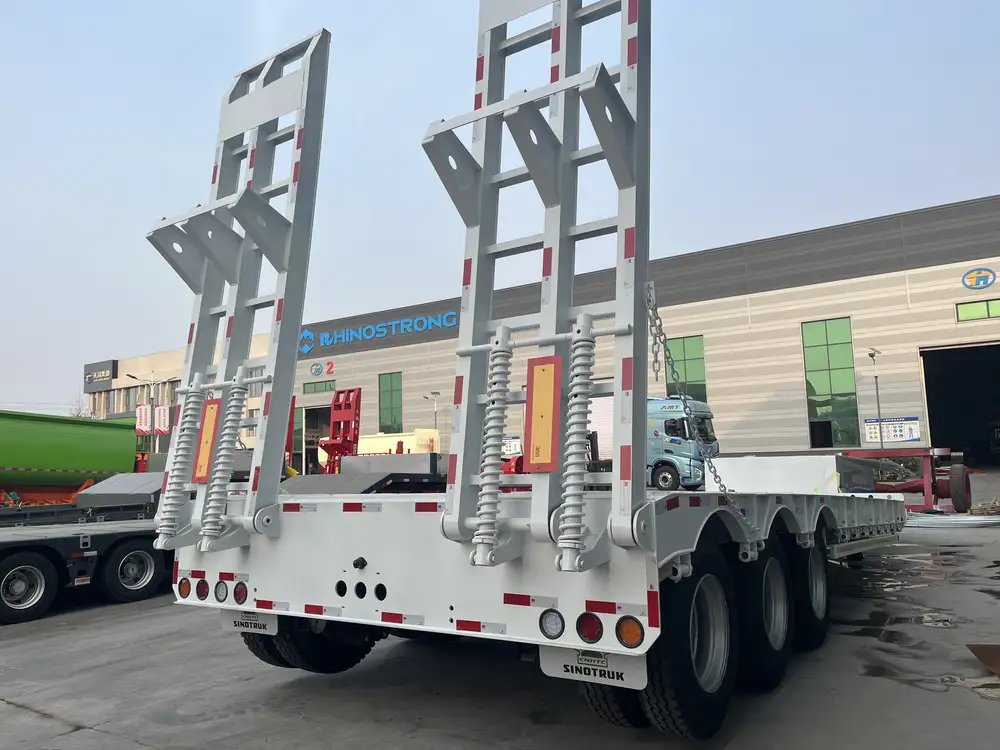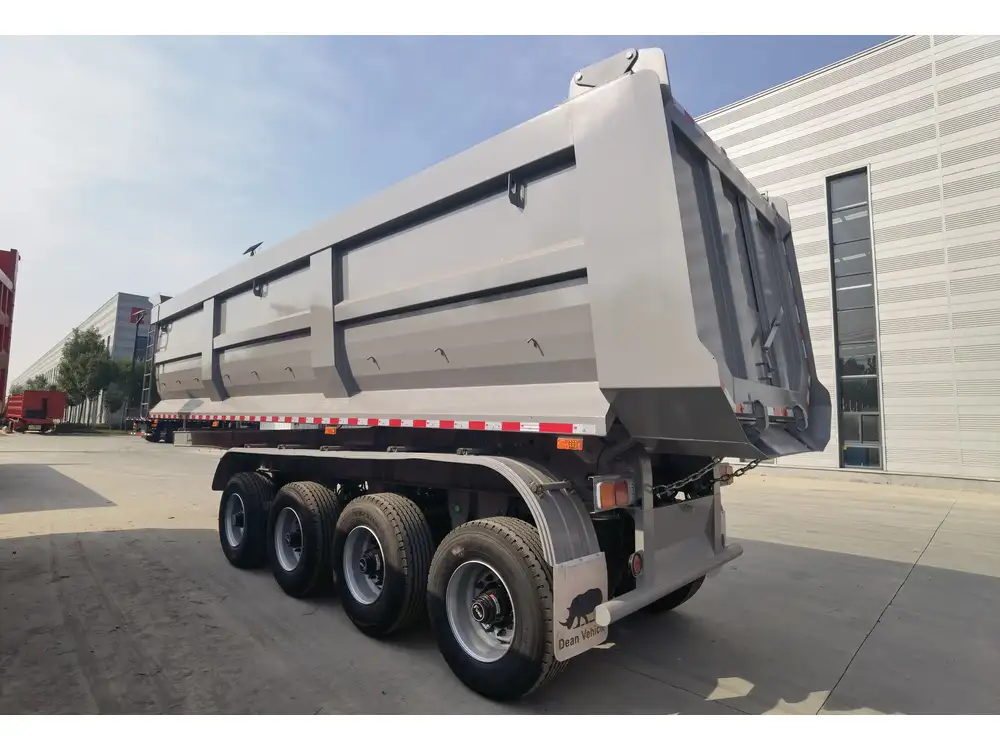Shipping logistics have evolved into a pivotal industry, with semi-trailers being the backbone of freight transportation. When considering carriers like FedEx, understanding the dimensions and specifications of their semi-trailer options becomes essential for businesses seeking efficiency and capacity in their shipping processes. In this article, we’ll delve into the specifics of what constitutes a normal FedEx size semi-trailer, including dimensions, types, functionalities, and important considerations for potential users.
What Defines a Normal FedEx Size Semi Trailer?
Dimensions and Specifications
FedEx utilizes various types of semi-trailers tailored for different logistics requirements. The standard dimensions for FedEx semi-trailers generally fall within specific measurements:
| Trailer Type | Length | Width | Height | Volume Capacity |
|---|---|---|---|---|
| FedEx 53′ Dry Van | 53 feet (16.15 m) | 8.5 feet | 13.5 feet | Up to 3,800 cubic feet |
| FedEx Reefer | 53 feet (16.15 m) | 8.5 feet | 13.5 feet | Up to 3,800 cubic feet |
| FedEx Flatbed | 48-53 feet | 8.5 feet | Varies | Varies based on load |

Types of Trailers
Dry Van Trailers: These enclosed trailers are designed to protect freight from the elements. With a standard height of 13.5 feet, they offer a volume capacity that can accommodate a variety of goods.
Reefer Trailers: Equipped with refrigeration units, these trailers are ideal for transporting perishable goods. Their dimensions generally mirror that of dry vans, but temperature control is a key distinguishing feature.
Flatbed Trailers: Flexible in use but requiring extra care in securing loads, flatbeds range from 48 to 53 feet in length. Their open structure allows for the transportation of oversized or heavy materials.
Why Size Matters in Semi-Trailer Applications
Load Capacity and Efficiency
Choosing the right size semi-trailer is critical for optimizing load capacity. A correctly sized trailer not only maximizes the cubic volume but also ensures compliance with weight restrictions imposed by local laws. This compliance prevents potential penalties while boosting operational efficiency.

Maneuverability
Consideration of trailer dimensions also influences maneuverability. While longer trailers allow for more cargo, they can pose challenges in urban environments and tight spaces. Here, the turning radius, which varies by trailer length, plays a major role in determining feasible navigation routes.
Intermodal Compatibility
Intermodal shipping often requires seamless transition between different transportation modes (e.g., trucks, trains, ships). The standardized sizes of FedEx semi-trailers aid in maintaining consistency and compatibility, thus facilitating smoother cargo transitions.
Key Considerations When Using FedEx Semi Trailers

Choosing the Right Trailer Type
Understanding your specific shipping needs is paramount. Key questions to guide your choice include:
- What type of goods are you transporting?
- Do you require temperature control?
- Is the shipment size within the load capacity of FedEx?
Utilizing the correct trailer type enhances operational efficiency. For instance, perishables necessitate reefer trailers, while non-perishables can be efficiently transported using dry vans.
Compliance with Regulations
Transporting goods with semi-trailers must adhere to numerous regulations, including weight limits and safety standards. It is essential to stay informed about both state and federal regulations to avoid penalties. Weight regulations can vary significantly by jurisdiction, necessitating careful route planning.
Calculating Load Capacity

Weight Distribution
Proper load distribution within a semi-trailer is vital for safety and efficiency. The importance of maintaining the center of gravity cannot be overstated, as improper distribution can lead to accidents. Considerations for proper weight distribution include:
- Placing heavier items closer to the trailer’s axles.
- Avoiding top-heavy stacking that could hinder stability.
Volume Vs. Weight Considerations
In addition to weight, volume capacity plays a critical role. It is essential to monitor both aspects:
- Dimensional Weight: A method used by many carriers, including FedEx, where shipping costs are determined based on a package’s dimensional weight rather than its actual weight.
Economic Implications of Size and Functionality

Cost-Efficiency in Transport
The size and type of semi-trailer chosen directly influence shipping costs. Understanding the balance between volume and weight can lead to significant cost savings. For instance, optimizing load capacity can reduce the number of trips required, thus lowering overall transportation costs.
Insurance and Liability
It is essential to understand the implications of size on insurance policies. Larger shipments may lead to higher insurance premiums, and individual trailers may require specific coverage depending on their cargo type. Make certain to review your liability coverage to ensure you are protected against potential losses.
Innovations in Semi-Trailer Technology

Eco-Friendly Initiatives
The logistics industry is increasingly focused on sustainability. FedEx has begun integrating eco-friendly practices into its trailer production and operation. Lightweight materials and optimized aerodynamics enhance fuel efficiency and reduce carbon footprints.
Advanced Tracking Systems
Modern semi-trailers are now equipped with state-of-the-art tracking systems that improve transparency and real-time data access for shippers. These innovations assist logistics providers in maintaining accurate delivery timelines.
Smart Trailers
Innovations such as smart trailers, featuring IoT technology, enable real-time monitoring of cargo conditions and trailer performance. This empowers users to respond proactively to shifts in shipment integrity, thereby enhancing overall service quality.

Conclusion
Understanding the intricacies of normal FedEx size semi-trailers extends beyond mere dimensions. As logistics continues to evolve, businesses must navigate the complexities of choosing the right trailer type, dimensions, regulatory compliance, and innovative technologies. By considering these factors, shippers can optimize their freight operations, enhance cost-efficiency, and ensure the safe transit of goods.
For more in-depth information, always refer to FedEx’s official resources or consult logistics experts who can provide tailored advice based on your specific shipping needs.



